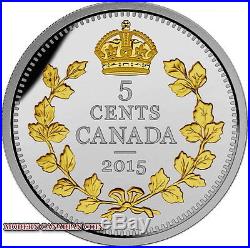
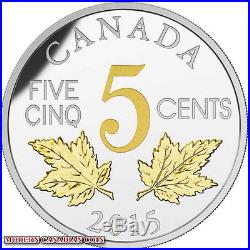
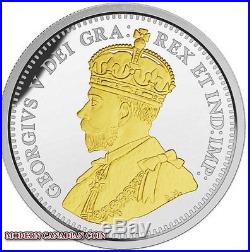
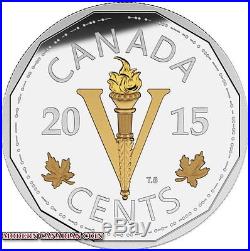
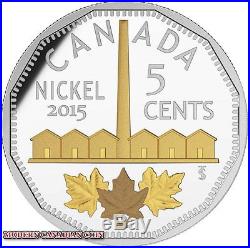
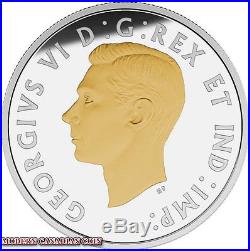
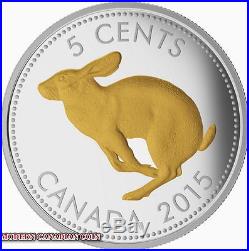
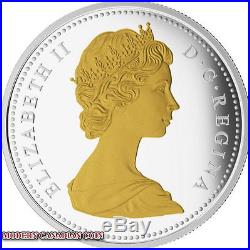
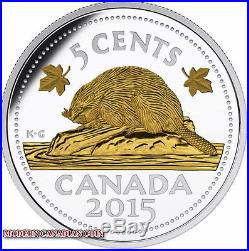
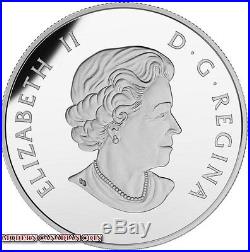
SET OF 6 COINS THAT REVISIT THE 5¢ COIN FROM : #1 coin: 1911 à 1921. #2 coin: 1922 à 1936. #3 coin: 1943 à 1945: War series. To commemorate Nickel 100. To commemorate Confederation 100 ième. #6 coin: 1937 at today. THEY COME WITH A WOOD BOX. On J anuary 2, 1908, the opening of the Ottawa branch of the Royal Mint marked the dawn of a new era. Although the tooling continued to be crafted by Royal Mint engravers in London, coins were now being produced in Canada, for Canada, at the Sussex Drive location in Ottawa, Ont. While it was not yet made with nickelnor did it feature the famed beaver the crossed maple was the first of the 5-cent designs to be produced in the very early days of the Royal Canadian Mint. This stunning recreation of the coin design from 1911 to 1921 offers a unique look back at the history of Canada’s nickel coin. Throughout its history, each of the nickel’s transformations provides a glimpse of a young nation that was seeking to define itself, and a Mint that would quickly come into its own. Legacy of the Canadian Nickel. Series is a retrospective look at the history of 5-cent coins minted by the Royal Canadian Mint, beginning with this crossed maple bough design that was used until 1921. EACH COIN INCLUDES A UNIQUE EFFIGY. Each coin within the series is faithful to the original design and includes the effigy of the reigning monarch at the time of the coin’s original issue date. The crossed maple is the first coin of the six-coin Legacy of the Canadian Nickel series, which recreates previous 5-cent coin designs produced by the Royal Canadian Mint throughout its history, since 1908. Other coins include in the Wood Box. #2: Two Maple Leaves: #1 and #2 : Georges V: Observe side. #4: The Identification of Nickel: #3 and #4: Georges VI: Observe side. #5: The Centennial 5-cent Coin: Elizabeth II. #6: The Beaver: Elizabeth II a this time by Suzanna Blunt. Modern techniques and multiple finishes help bring the past to life with added definition and enhanced detailing. These coin’s 40-mm diameter makes it double the size of the original, allowing for a larger canvas to showcase the intricately detailed design. These proof coin is 99.99% pure silver, with selective gold plating. Coin design for the first coin. The reverse image features a recreation of William Henry James Blakemore’s design, which graced the 5-cent coin from 1911 to 1921. Finely detailed engraving and selective gold plating recreate. Edward’s Crown, the solid gold coronation crown, as it appeared on the original coin design. New sculpting and finishes bring added definition to t he crossed bough of 22 maple leaves. Featured on the obverse is the effigy of King George V, who was the reigning monarch from 1910 to 1936. The five-cent coin was largely made of silver. Nickel, which would give this coin its nickname, would be introduced in 1922. This coin was much smaller than the 5-cent coin we’re used to today! It measured 15.5 millimetres in diameter compared to the current measurement of 21.2, and weighed less than a third of what today’s nickels weigh. Back then, Canadians found that the tiny size and silver glint of the Crossed Maple Bough five-cent piece resembled that of a fish’s scales and, appropriately, took to calling the coin a fish scale. The crossed maple bough design (as recreated on this coin) appeared on 5-cent coins in some variation or another between 1858 and 1921. In 1911, the obverse was updated with the new effigy of His Majesty George V; this was designed by William James Henry Blakemore, a noted British engraver who was responsible for Commonwealth coins. ” was briefly omitted that same year, but was replaced with “. The final version of this coin, minted in 1921, is one of the rarest of Canadian coins; once legislation passed to change the coin’s metal composition, most of that year’s mintage was melted down. It’s thought that only about 100 of these coins survived! Coin design for the second coin: it’s nickname: Nickel. Your coin features a recreation of William James Henry Blakemore’s 1922 redesign of Canada’s 5-cent coin. Finely detailed engraving, multiple finishes and selective gold plating breathe new life and more definition to the original design, which features two maple leaves facing outward from the centre. They frame the bottom of a stylistically rendered “5″ which paired with the words “FIVE” “CINQ” and “CENTS” indicate the face value. Also engraved on the reverse are the word “CANADA” and the year “2015″. The obverse features the effigy of King George V, who was the reigning monarch from 1910 to 1936 by Sir E. Coin design FOR THE THIRD COIN. The reverse design recreates Thomas Shingle’s 1943 Victory design of Canada’s 5-cent coin. The master engraver’s original design is recreated and enhanced with multiple finishes, an updated bilingual Morse code message and selective gold plating. Double the size of its original, this replica allows the viewer to glimpse the intricately engraved flaming torch in the centre, which represents the sacrifice made by Canadians at home and on the battlefields of the Second World War. Behind it, the “V” has a double meaning as both a representation of Sir Winston Churchill’s famous V for Victory sign and as the Roman number for the coin’s face value. Two maple leaves stand on either side of the V. Along the original coin’s 12 flat edges, the rallying cry “We Win When We Work Willingly” was engraved in Morse code and has been replicated here along this coin’s round rim updated to also include the message in French; also engraved on the reverse are the word “CANADA” and the year “2015″. The obverse features the effigy of King George VI, who was the reigning monarch at the time of the Victory coin’s first issue by Thomas Humphrey. COIN DESIGN FOR THE FOURTH COIN. The reverse image features Stephen Trenkas 1951 commemorative nickel design, which was originally engraved by the Mints legendary master engraver, Thomas Shingles. Here, the original 12-sided coin design has been enhanced thanks to multiple finishes and selective gold plating, which bring added depth and definition to the iconic image. With its long smoke stack rising up in the centre, the nickel refinery is beautifully rendered with finely detailed engraving, as are the three maple leaves below it. The reverse is engraved with is the word CANADA and the face value 5 CENTS, while the original commemorative dates have been updated to reflect the current year 2015. The obverse features T. Pagets effigy of King George VI, who was the reigning monarch at the time of the coins issue. Coin design FOR THE FIFTH COIN. In 1967, Canada celebrated a key milestone in this young nation’s history: the 100th anniversary of Confederation. To commemorate Canada’s centennial, the Royal Canadian Mint unveiled new designs for every denomination of circulation coins. From the one-cent to the silver dollar, each featured a reverse image designed by artist Alex Colvilleincluding the hopping rabbit that adorned the centennial five-cent coin, as recreated with this beautifully detailed coin. The reverse features the unique commemorative design by famed Canadian painter Alex Colville that adorned the five-cent circulation coin in 1967. Using multiple finishes and selective gold plating to further enhance the design, this recreation of the hopping rabbit is rendered in fine detail and on a larger scale, allowing a closer look at the original design featured on the centennial nickel. Engraved on the reverse is the face value “5 CENTS”, the word “CANADA” and the updated year “2015″. The obverse features the second effigy of Her Majesty Queen Elizabeth II by Arnold Machin. Coin design FOR THE SIXTH COIN. Sixth and final coin in the Legacy of the Canadian Nickel series! The final coin in this series features the design most people associate with the five-cent cointhe hardworking beaver. Its represented here at almost double its original size with exceptional engraving thats further enhanced with new sculpting techniques and multiple finishes. The beaver made its debut in 1937 when the need for a new effigy gave this young nation the perfect opportunity to introduce new, Canadian designs. More than 75 years later, the beaver still shines! By 1936, George Edward Kruger-Gray was already a well-established artist whose designs graced coins throughout the British Empire. When the Royal Canadian Mint sought to give a more modern look to Canadas circulation coins, Kruger-Gray was asked to submit design ideas; three of his designs were ultimately accepted: the maple leaves on the reverse of the penny, the Coat of Arms of Canada on the 50-cent piece, and the beaver design for the 5-cent coin. This new 5-cent coin design was first issued in 1937; today, Kruger-Grays design is still found on the reverse of Canadas 5-cent coin where it has become a beloved iconic image in its own right. The choice of the beaver was a fitting one for the young nation, which was seeking to come into its own after gaining autonomy from Great Britain just a few years prior. The image is a nod to a hard-working animal, a cultural icon that is forever associated with Canadas fur-trading past and the beauty of its wilderness. Finely detailed engraving faithfully recreates the reverse image that was first introduced in 1937, while multiple finishes and selective gold plating bring added definition to G. With a chewed log lying by its side (at left), a beaver perches atop a rock-studded mound that rises up from the rippled surface of the water below. Above the beaver, the engraved face value 5 CENTS is framed on both sides by a maple leaf; Kruger-Grays initials are engraved next to the mound while below it is the word CANADA and the year 2015. Your coin is encapsulated and presented in a Royal Canadian Mint-branded Wood Box in the beauty black box to proteck the case. 99.99% pure silver. Proof with gold plating. Artist: #1 and #2. (Reverse and Observe Coin #1). MacKennal (reverse Coin #2). Thomas Shingles: (reverse), Thomas Humphray (observe). Thomas Shingles (reverse), T. Kruger-Gray (reverse), Susanna Blunt (obverse). The item “Revisit Canada 5 Cents Nickel History(2015)- 6 COINS SET FINE SILVER-GOLD PLATED” is in sale since Tuesday, May 03, 2016. This item is in the category “Coins & Paper Money\Coins\ Canada\Commemorative”. The seller is “optoscval” and is located in Brossard, Quebec. This item can be shipped to North, South, or Latin America, to all countries in Europe, to all countries in continental Asia, to Australia.
- Certification Number: COME WITH A CERTIFICATION NUMBER
- Grade: PERFECT CONDITION
- Circulated//Uncirculated: UNCIRCULATED
- Country//Region of Manufacture: Canada
Incoming search terms:
- indexof/ While Were Young
